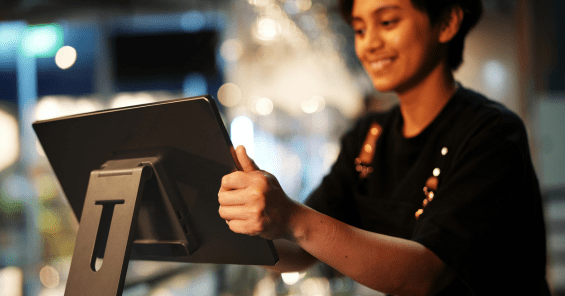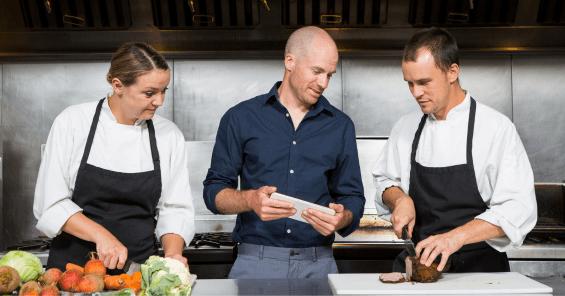

Restaurant Surcharges Explained: Service Charges, Tips, and Fees
Learn about restaurant surcharges, their impact on customer experience, and how to implement them effectively. Discover key surcharge types, including cork fees, regulations, and tips for maintaining transparency to ensure compliance and customer satisfaction.
Restaurant surcharges have become increasingly common on customer bills over the past few years. Despite consumer backlash, 15% of restaurants have added surcharges to mitigate inflation and rising costs, according to the National Restaurant Association. These fees can range from corkage charges to health insurance or wellness payments.
While some restaurateurs view surcharges as essential for staying afloat, many consumers are experiencing pricing fatigue and turning away from establishments that impose them.
But perhaps the biggest frustration for customers? Receiving their bill with this unexpected surprise.
Whether you decide to implement surcharges or not, the key to keeping customers happy—and staying compliant with local laws—is transparency. Because when you know the why behind these fees, you can determine if they’re right for your business.
The Ultimate Restaurant Dictionary Guide
Decode the most current restaurant lingo in 2024, making this guide a must-have for mastering restaurant terms and slang.

What is a Restaurant Surcharge?
A restaurant surcharge is an additional fee applied to a customer’s bill, on top of the listed menu prices. It is typically added as either a percentage of the total bill or a fixed amount.
Restaurants may introduce surcharges to address rising operational costs, such as increased food prices, higher wages, employee health benefits, or meeting local regulatory requirements.

Restaurant Surcharge Regulations
Before implementing surcharges in your restaurant, it’s essential to understand the specific regulations in your area, as these can vary widely across states and regions.
Restaurant owners must stay current with evolving laws, particularly those related to transparency, which often require clear communication of additional charges.
In many places, restaurants are legally obligated to display surcharges on menus or receipts so customers are fully aware of the fees they’re being charged.
For instance, in California, restaurants are obligated to clearly list service fees on their menus. Some regions may also impose stricter guidelines on how and when surcharges can be applied, making it even more important to stay informed of local rules.
Types of Restaurant Surcharges
Restaurant Service Charge
A service charge at a restaurant is an additional fee added to the total bill to account for the cost of service. Typically ranging from 10% to 20%, this charge helps cover various operational expenses related to staffing, such as employee wages, administrative costs, and benefits. Unlike a tip, which is generally given directly to the servers, the service charge is distributed more broadly to support overall staff and operational needs.
Many restaurants implement service charges for larger parties (usually groups of six or more), special events, or even across all bills as part of their standard policy. This practice helps ensure consistency in compensating staff, while also relieving patrons from the expectation of leaving a separate gratuity.
Tip
A tip, unlike a service charge, is an optional, voluntary payment left by customers to show appreciation for good service. Typically calculated as a percentage of the total bill, the industry standard ranges from 15% to 20%. Tips are traditionally given to front-of-house (FOH) staff, such as servers and bartenders. However, some restaurants implement tip pooling, where both FOH and back-of-house (BOH) staff, including kitchen employees, share in the tips to recognize everyone's contribution to the dining experience.
It's important to be aware that tipping practices are regulated, and guidelines can vary by state. Restaurateurs need to follow local laws when adopting tip pooling or similar compensation systems.
While tips have historically made up a large portion of service staff income, they can lead to inconsistent earnings. To provide more stable compensation, some restaurants are shifting toward service charges.

What is a Cork Fee?
A corkage fee is a type of surcharge that some restaurants charge when customers bring their own wine. This fee helps cover the costs associated with serving the wine, such as providing proper glassware, storing the bottle, and opening it. Corkage fees typically range from $10 to $50 per bottle, but they can vary widely based on the restaurant’s policy, the type of wine, and the level of service provided.
For restaurants with a curated wine list, corkage fees may also serve as a deterrent to encourage guests to purchase from the restaurant’s selection instead of bringing their own wine. It's essential to clearly communicate the corkage policy to avoid confusion. Make sure the fee is easily visible on your restaurant’s website, online menu, and reservation platforms.
Some restaurants may decline to serve wine brought by customers if that same wine is already on the restaurant’s wine list. If this is your policy, ensure that customers are informed in advance. Since many reservations are made online, it’s a good idea to provide access to your wine list so patrons can verify that the wine they wish to bring isn’t already available. This can help avoid awkward situations and keep your customers satisfied.
Restaurant Take-Out Fee
Some restaurants charge a take-out fee to cover the additional costs associated with packaging, labor, and maintaining food quality during transport. High-quality, eco-friendly packaging materials and the extra time staff spend preparing orders for take-out or delivery can add up quickly. The take-out fee helps offset these expenses without raising overall menu prices, ensuring the food arrives fresh and in top condition.
Transparency is key—restaurants should clearly communicate this fee on menus and online ordering platforms to avoid confusion and maintain customer trust. This small charge helps keep operations efficient while ensuring a positive take-out experience.
Implementing Surcharges: Factors to Consider
No two restaurants are alike, and the surcharges you implement may vary based on several important factors. Competitor analysis is essential—understanding how other restaurants in your area handle surcharges offers valuable insights. Are they applying similar fees, and how are customers responding? This can help you position your own surcharge effectively and ensure you remain competitive.
Another critical factor is customer feedback. The way your guests perceive additional charges can significantly impact their dining experience. Transparency is key—gathering and acting on feedback can help you implement a surcharge that feels fair and doesn’t alienate your customers, while still ensuring your costs are covered.
To determine if surcharges are right for your restaurant business and what that surcharge should be, it’s important to conduct a cost analysis. Having a clear understanding of your operating expenses—food, labor, and overhead—helps pinpoint the costs you need to cover and highlights potential areas for cost reduction.
Many restaurants implement service charges as an alternative to raising menu prices, especially when facing rising costs that can affect profitability. Relying on service charges may indicate that costs are outpacing revenues. Optimizing menu profitability through menu engineering and identifying opportunities to lower food costs are effective strategies for improving profit margins.
By identifying and promoting high-profit items and minimizing waste or sourcing more cost-effective ingredients, restaurants can improve overall profitability.

With MarketMan, a cloud-based restaurant management software, restaurateurs can easily track their costs, monitor real-time profitability, and lower their COGS. Whether streamlining inventory management or gaining insights into menu performance, MarketMan helps restaurants make data-driven decisions and drive business growth. Schedule a demo today to see it in action.
Author
Contributors
Si vous avez des questions ou si vous avez besoin d'aide, n'hésitez pas à nous contacter.
Ne manquez pas de maximiser les profits de votre restaurant ! Calculez votre ROI avec MarketMan
Join over 18,000 restaurants and get the hottest restaurant tips delivered to your inbox
You may also be interested in
Prêt à commencer ?
Parlez à un expert en restauration dès aujourd'hui et découvrez comment MarketMan peut aider votre entreprise.






